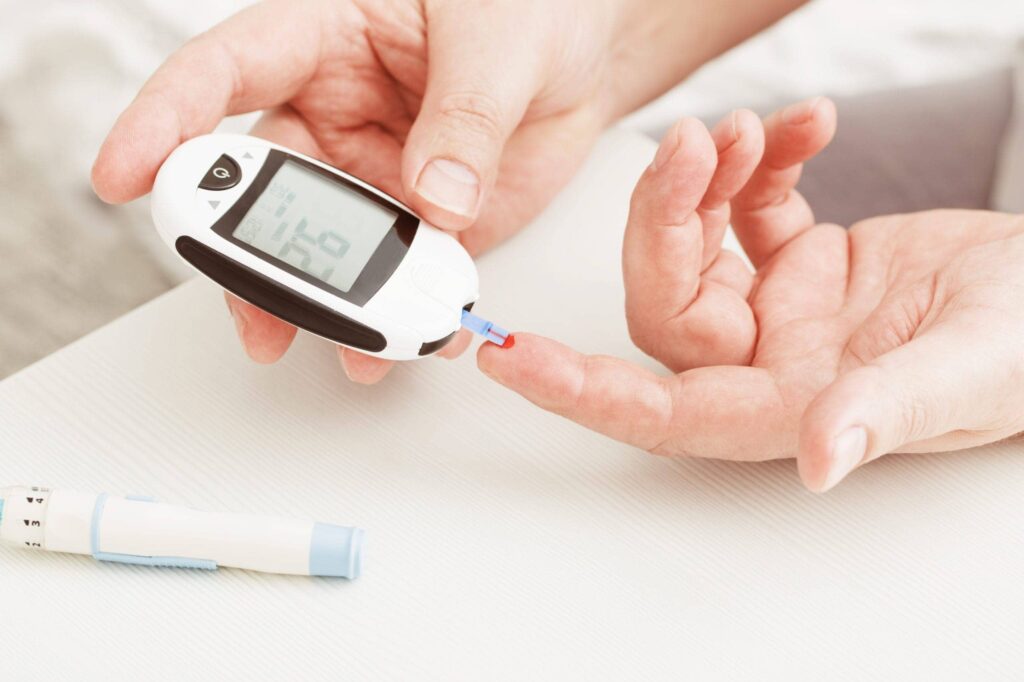Understanding Diabetes Mellitus: Causes, Symptoms, and Managing Your Health
Share IT

Launch Your Dream Website with Us!
Click Here to Get in touch with Us.
Categories
Introduction to Diabetes Mellitus
Deciphering Diabetes Mellitus: An International Health Concern
Diabetes mellitus, which is sometimes abbreviated as diabetes, is a long-term medical illness marked by elevated glucose (blood sugar) levels. Millions of people are impacted globally, with negative effects on their health and wellbeing. This blog post explores the causes, types, symptoms, and possible complications of diabetes mellitus in order to provide an overview of the condition.
Thank you for reading this post, don't forget to subscribe!Table of Contents

Insulin’s Function in Controlling Blood Sugar
Introduction to Diabetes Mellitus
Our bodies transform food, particularly carbs, into glucose, which serves as our cells’ main source of energy. The hormone insulin, which is produced by the pancreas, a gland situated beneath the stomach, is in charge of transferring glucose from the bloodstream into the cells. Insulin carefully controls blood sugar levels in a healthy person.
When the System Breaks: Diabetes Causes
Introduction to Diabetes Mellitus
This delicate equilibrium is upset by the three primary forms of diabetes, each of which has a unique cause:
- Type 1 Diabetes: The pancreatic cells that produce insulin are mistakenly attacked by the immune system, leading to a total or almost total loss of insulin production. Usually, this kind affects young adults and children.
- Type 2 Diabetes: In this condition, the body either produces insufficient insulin or develops insulin resistance, which causes cells to become less receptive to insulin. This is the most prevalent kind, frequently associated with lifestyle choices including obesity and sedentary behaviour.
- Gestational diabetes: Hormonal changes that can impact insulin sensitivity cause this kind of diabetes to develop during pregnancy. Although it typically goes away after childbirth, it can raise the chance of acquiring Type 2 Diabetes in the future.
Signs of Concern That You Should Not Ignore Diabetes symptoms
Introduction to Diabetes Mellitus
Although symptoms might differ between types, the following are some typical indicators that you may have diabetes:
- Increased thirst and urination: As a way for the body to get rid of extra glucose, frequent urination and a greater need to drink fluids are the results.
- Unexpected weight loss: The body breaks down muscle and fat for energy when cells are unable to obtain glucose because of an insulin shortage. This results in unintentional weight loss.
- Severe hunger: When cells don’t get enough glucose, they become energy-starved and have persistent hunger pangs.
- Fatigue and impaired vision: Both of these conditions can be brought on by high blood sugar levels.
- Slow-healing wounds: One possible effect of diabetes is impaired circulation, which can cause a delay in wound healing.
The Value of Prompt Identification and Diagnosis
Introduction to Diabetes Mellitus
Avoiding major consequences from diabetes requires early diagnosis and treatment. If you encounter any of the previously listed symptoms, get a blood sugar test from a medical practitioner.
Possible Adverse Effects of Untreated Diabetes
Introduction to Diabetes Mellitus
Chronically high blood sugar levels can harm several physiological systems if left untreated, which can result in issues such as:
- Diabetes affects blood: arteries and raises the risk of heart attacks and strokes, which can lead to heart disease and strokes.
- Damage to the nerves: also known as neuropathy, can result in pain, weakness, tingling, and numbness, especially in the legs and feet.
- Nephropathy, or kidney disease: Excessive blood sugar can harm the kidneys and cause renal failure.
- Diabetes can harm: the blood vessels in the retina, which may result in visual impairments (retinopathy).
- Foot issues: Infections and foot ulcers can be exacerbated by poor circulation and nerve loss, and in extreme situations, amputation may be necessary.
Managing Diabetes to Lead a Healthy Life: Available Strategies
Introduction to Diabetes Mellitus
Although there is no known treatment for Type 1 Diabetes, there are a number of management techniques that can assist maintain blood sugar levels and avert problems. Among them are:
- Blood Sugar Monitoring: Monitoring your blood sugar levels on a regular basis can help you better understand how your body reacts to food and medication.
- Medication: Medication may be required to enhance insulin action or augment insulin production, depending on the type and severity of diabetes.
- Healthy Diet: Appropriate nourishment is guaranteed without raising blood sugar levels with a balanced diet high in fruits, vegetables, whole grains, and lean protein.
- Frequent Exercise: Exercise helps control weight and insulin sensitivity, two important aspects of managing diabetes.
- Changes in Lifestyle: Reducing stress, quitting smoking, and getting adequate sleep are all critical for general well-being and improved diabetes management.
Introduction to Diabetes Mellitus
People with diabetes may take charge of their health and lead active, fulfilling lives when they are aware of the disease’s causes, symptoms, and available management options. People with diabetes can reduce their risk of problems and preserve optimal health by collaborating with healthcare providers and implementing healthy lifestyle practices.

Launch Your Dream Website with Us!
Click Here to Get in touch with Us.





























































Recent Comments